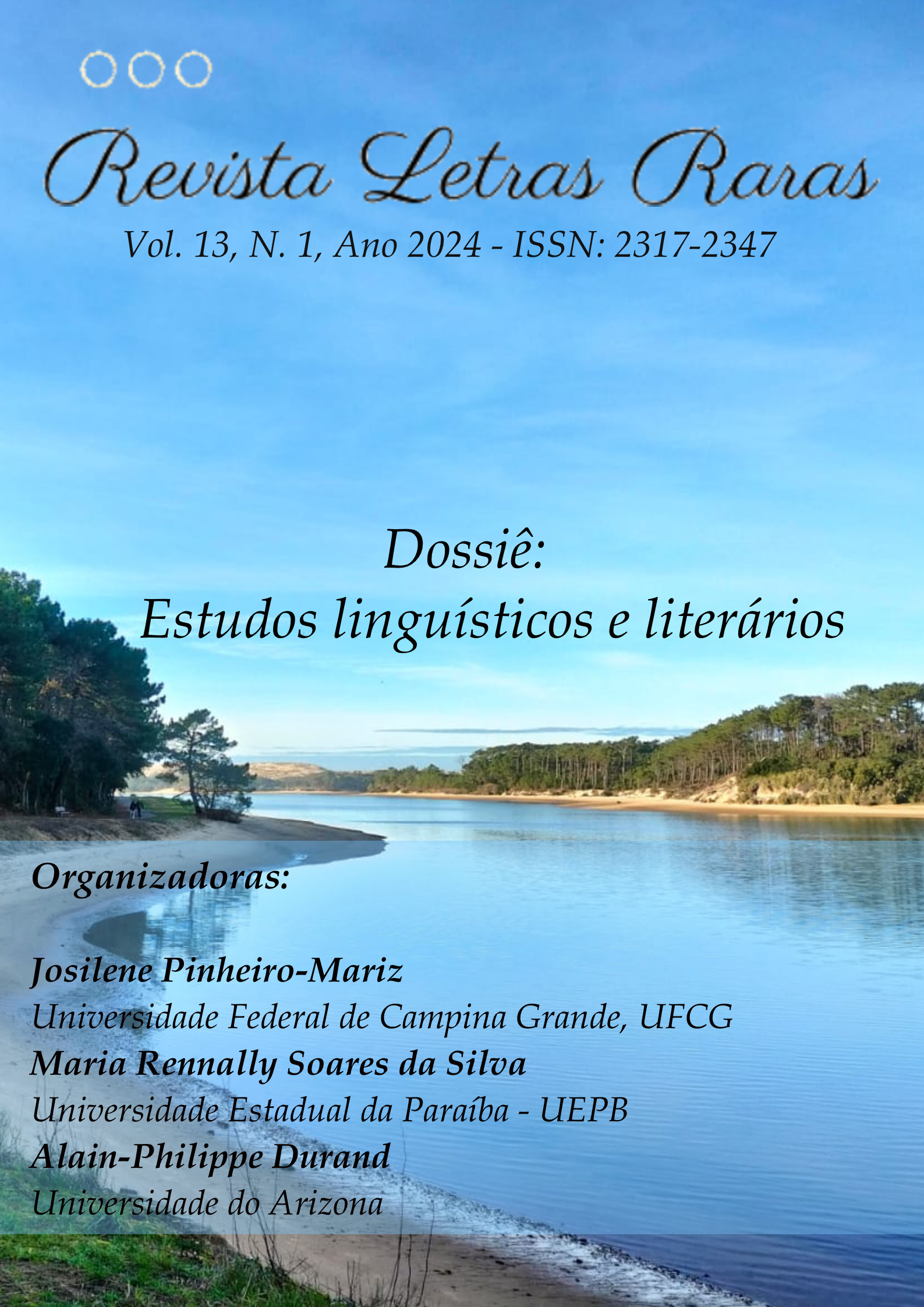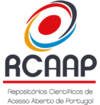Authorship Indicators in Perfect Score Essays on the Enem: a Resonance of Enunciative Voices
DOI:
https://doi.org/10.5281/zenodo.10699328.Palavras-chave:
Enem essays, Enunciative voices, Erasure of the author, Evidence of authorshipResumo
This work aims to analyze the management of enunciative voices in two perfect score essays from the Enem 2021, where the writers employed the strategy of including other voices to meet competencies two and three, derived from a set of five mandatory competencies, as outlined in the Participant's Guide of the Enem (2020). Specifically, it seeks to describe whether the presence of these voices contributes to the erasure of the writer or reveals signs of authorship in the selected samples. Theoretically, the study draws from the framework of discursive studies, emphasizing the contributions of Bakhtin (1997, 2011) and Possenti (2002) on the notion of authorship, coupled with the studies of Bronckart (1999), Boch, and Grossmann (2002) on the manifestation of enunciative voices in texts. Methodologically, this research is characterized as qualitative and interpretative, applied to a corpus of two perfect score essays from Enem 2021, extracted from the G1 website. In that year, the theme proposed by the exam was "Invisibility and civil registration: guarantee of access to citizenship in Brazil," which required candidates to meet the five competencies of the Enem related to textual and linguistic knowledge and the use of a sociocultural repertoire adopted as an argument of authority to validate each writer's perspective. After the analyses, the results contradict the erasure of authorial voices, as the resonance of enunciative voices complies with competencies two and three and serves to validate the discourse defended by the writer, revealing indications of authorship.
Downloads
Referências
BAKHTIN, M. Estética da criação verbal. Introdução e tradução do russo Paulo Bezerra. - 6ª ed.- São Paulo : Published by WMF Martins Fontes, 2011.
BAKHTIN, M. Estética da criação verbal. Tradução do francês por Maria Emsantina Galvão G. Pereira e revisão da tradução de Marina Appenzellerl. São Paulo: Martins Fontes, 1997.
BAKHTIN, M. Questões de literatura e de estética:a teoria do romance. Tradução do russo por Aurora Fornoni Bernardini et al. São Paulo: UNESP; Hucitec, 1988 [1975].
BAKHTIN, M. Marxismo e filosofia da linguagem. Tradução de Michel Lahud e Yara F. Vieira. Prefácio de Roman Jakobson. 12ª ed. São Paulo: Hucitec, 2006 [1929].
BOCH, F.; GROSSMANN, F.Referir-se ao discurso do outro: alguns elementos de comparação entre especialistas e principiantes. Scripta, v. 6, n. 11, p. 97-108, 28 out 2002.
BRAIT, B. Bakhtin:conceitos-chave. São Paulo: Contexto, 2005.
BRASIL. Instituto Nacional de Estudos e Pesquisas Educacionais Anísio Teixeira (Inep). A redação no Enem 2020: cartilha do participante. Brasília, DF: INEP, 2020.
BRONCKART. J. P Atividade de linguagem, textos e discursos: Por um interacionismo sócio-discursivo. Tradução Anna Rachel Machado São Paulo: EDUC, 1999.
CYSNE, D. Constituição de 1988.InfoEscola. Available in: https://www.infoescola.com/direito/constituicao-de-1988/#:~:text=Ela%20%C3%A9%20um%20documento%20formal,com%20dificuldade%20(emendas%20constitucionais). Accessed on: May 15, 2023.
DIAS, É.; RAMOS, M. N..A Educação e os impactos da Covid-19 nas aprendizagens escolares. Ensaio: Avaliação e Políticas Públicas em Educação, v. 30, n. 117, p. 859–870, out. 2022.
ENEM. Enem:leia redações nota mil da edição 2020 da prova. 2021a. Available in: https://g1.globo.com/educacao/enem/2021/noticia/2021/05/28/enem-leia-redacoes-nota-mil-em-2020.ghtml. Accessed on: May 10, 2023.
ENEM. Leia exemplo de redação nota mil do Enem 2021 de candidata de Minas Gerais. 2022. Available in: https://g1.globo.com/mg/minas-gerais/noticia/2022/04/08/leia-exemplo-de-redacao-nota-mil-do-enem-2021-de-candidata-de-minas-gerais.ghtml. Accessed on: June 29, 2023.
ENEM. Leia 8 exemplos de redações nota mil do Enem 2021. 2022. Available in: https://g1.globo.com/educacao/enem/2021/noticia/2022/04/11/leia-redacoes-nota-mil-do-enem-2021.ghtml. Accessed on: August 2, 2023.
FARACO, C. A. Autor e autoria. In: BRAIT, B. Bakhtin: conceitos-chave. São Paulo: Contexto, 2005.
FOUCAULT. O que é um autor? Lisboa: Veja, 1969. p. 29-87.
FOUCAULT, M. A arqueologia do saber. Tradução de Luiz Felipe Baeta Neves. 7ª ed. Rio de Janeiro: Forense Universitária, 2008.
G1 (org.). Enem 2021 tem 4 milhões de inscritos, menor número desde 2007. 2021b. Available in: https://g1.globo.com/google/amp/educacao/enem/2021/noticia/2021/07/15/enem-2021-tem-4-milhoes-de-inscritos.ghtml. Accessed on: May 10, 2023.
INEP. Enem: apresentação. Apresentação. Available in: https://www.gov.br/inep/pt-br/areas-de-atuacao/avaliacao-e-Exames-educacionais/enem. Accessed on: May 10, 2023.
PNUD. Programa das Nações Unidas — PNUD. 2021. Available in: https://www.gov.br/saude/pt-br/acesso-a-informacao/gestao-do-sus/cooperacao-em-saude/parceiros/pnud. Acesso em: 15 maio 2023.
POSSENTI, S. Os limites do discurso. Curitiba: Criar, 2002.
POSSENTI, S. Indícios de autoria. In: Questões para analistas do discurso. São Paulo: Parábola, 2009b.
POSSENTI, S. Notas sobre a questão da autoria. In: Revista Matraga, v.20. n. 32. Rio de Janeiro, 2013.
SOBRAL, A. A concepção de autoria do “Círculo Bakhtin, Medvedev, Voloshinov”:confrontos e definições. Macabéa – Revista Eletrônica do Netlli, v.1, n.2, dez. 2012.
Downloads
Publicado
Como Citar
Edição
Seção
Licença
Copyright (c) 2024 Revista Letras Raras

Este trabalho está licenciado sob uma licença Creative Commons Attribution-NonCommercial 4.0 International License.







